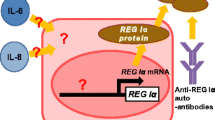Abstract
In this study, we constructed the recombinant plasmid of pGL2/Aquaporin5(AQP5) promoter (pGL2/AQP5p) luciferase reporter, then found estradiol(E2) induced AQP5 promoter activation in a dose-dependent manner. Further, we identified endogenous estrogen receptors(ER), including ERα and ERβ, expressed in human submandibular gland(HSG) cells, which responded to E2. Then demonstrated by the stimulation of E2, AQP5 was upregulated in protein level, meanwhile AQP5 located in cytomembrane was elevated in immunofluorescence. Furthermore, we revealed the roles of ERα and ERβ in AQP5 upregulation by E2. When ERα and ERβ were overexpressed, the AQP5 transcription level and protein expression were augmented obviously. While when knockdown ER by ERα-shRNA or ERβ-shRNA, AQP5 transcription and expression attenuated. Moreover, we detected the effect of E2 in Sjogren’s syndrome(SS) mice model in vivo. SS mice models were constructed by injecting submandibular gland antigen immune induction combined with estrogen deprivation, which were administrated with saline and E2. The salivary secretion was decreased, and the AQP5 expression downregulated in the submandibular gland in the SS model group. When SS mice were administrated with E2, the salivary secretion was significantly increased, and the AQP5 expression upregulated in the submandibular gland. These results suggest E2 activates AQP5p transcription and upregulates AQP5 protein expression, and E2 promotes salivary secretion in SS model in vivo. Taken together, we provided the evidence that E2 increased salivary secretion by activating AQP5 transcription and expression.
Similar content being viewed by others
References
Agre P., Angewandte Chemie—International Edition, 2004, 43, 4278
Verkman A. S., Reviews of Physiology Biochemistry and Pharmacology, 2005, 155, 31
Yool A. J., Current Pharmaceutical Design, 2007, 13, 3212
Rojek A., Praetorius J., Frokiaer J., Nielsen S., Fenton R., Annual Review of Physiology, 2008, 70, 301
Ishibashi K., Tanaka Y., Morishita Y., Biochim. Biophys., Acta, 2014, 1840, 1507
Kazuo H., European Journal of Physiology, 2016, 468(4), 519
Agre P., Kozono D., FEBS Letters, 2003, 555, 72
Ishikawa Y., Cho G., Yuan Z., Journal of Pharmacological Sciences, 2006, 100, 495
Ma T., Song Y., Gillespie A., The Journal of Biological Chemistry, 1999, 16, 274
Mariette X., Criswell L. A., The New England Journal of Medicine, 2018, 378(10), 931
Muhammad S. S., Clara C., Jason P., Christine D., International Journal of Molecular Sciences, 2018, 19(11), 3392
Delporte C., Bryla A., Perret J., International Journal of Molecular Sciences, 2016, 17, 166
Ichiyama T., Nakatani E., Tatsumi K., Hideshima K., Urano T., Nariai Y., Sekine J., Journal of Oral Science, 2018, 60, 212
Yoshimura S., Nakamura H., Horai Y., Nakajima H., Shiraishi H., Hayashi T., Takahashi T., Kawakami A., Modern Rheumatology, 2016, 26, 384
Enger T. B., Aure M. H., Jensen J. L., Galtung H. K., Acta Odontol. Scand., 2014, 72, 549
Pauliina P., Mikael L., Liisa V., Praseet P., Ann. N. Y. Acad. Sci., 2007, 1108, 426
Wei W., Zhao C. Y., Liu S. T., Jiao X. F., Liu X. T., Lan C. J., Li J., Chem. Res. Chinese Universities, 2018, 34(6), 929
Nilsson S., Physiological Revews, 2001, 81, 1535
Nemere I., Journal of Cellular Biochemistry, 2003, 88, 438
Ishikawa Y., Yuan Z., Inoue N., Skowronski M. T., Nakae Y., Shono M., Am. J. Physiol. Cell Physiol., 2005, 289, 1303
Porola P., Laine M., Virkki L., Poduval P., Konttinen Y. T., Annals of The New York Academy of Sciences, 2007, 1108(1), 426
Author information
Authors and Affiliations
Corresponding author
Additional information
Supported by the Fund of Science and Technology Department of Jilin Province, China(No.20170204009YY), the Fund of Science & Technology Department of Changchun City, China(No.17YJ001), the Project of the Ministry of Science and Technology of China(No.2016YFE0128500) and the Fund of Development and Reform Commission of Jilin Province, China (No.2016C048-3).
Rights and permissions
About this article
Cite this article
Wei, W., He, X., Liu, X. et al. Estradiol Induced Estrogen Receptor-mediated Transcription and Expression of Aquaporin5. Chem. Res. Chin. Univ. 35, 239–244 (2019). https://doi.org/10.1007/s40242-019-9016-6
Received:
Accepted:
Published:
Issue Date:
DOI: https://doi.org/10.1007/s40242-019-9016-6




